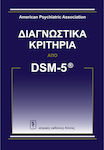Selected Store
Skroutz Buyers Protection
Set the delivery location to see products according to your choice.
 AustriaEnglish
AustriaEnglish BelgiumEnglish
BelgiumEnglish BulgariaБългарски
BulgariaБългарски CroatiaEnglish
CroatiaEnglish CyprusΕλληνικά
CyprusΕλληνικά CzechiaEnglish
CzechiaEnglish EstoniaEnglish
EstoniaEnglish FinlandEnglish
FinlandEnglish FranceEnglish
FranceEnglish GermanyDeutsch
GermanyDeutsch GreeceΕλληνικά
GreeceΕλληνικά HungaryEnglish
HungaryEnglish IrelandEnglish
IrelandEnglish ItalyEnglish
ItalyEnglish LatviaEnglish
LatviaEnglish LithuaniaEnglish
LithuaniaEnglish LuxembourgEnglish
LuxembourgEnglish MaltaEnglish
MaltaEnglish NetherlandsEnglish
NetherlandsEnglish PolandEnglish
PolandEnglish PortugalEnglish
PortugalEnglish RomaniaRomână
RomaniaRomână SlovakiaEnglish
SlovakiaEnglish SloveniaEnglish
SloveniaEnglish SpainEnglish
SpainEnglish SwedenEnglish
SwedenEnglish
© 20[0-9]{2} Skroutz SA All Rights and Lefts reserved. FAQ | Terms of use | Privacy Policy | Cookie Policy

Selected Store
Skroutz Buyers Protection


Scientific Books










Prices are calculated for:Malta, Other Payment Options
It would not be an exaggeration to say that weed science is the most important branch of plant protection (compared to entomology and plant pathology), as approximately 42% of crop losses worldwide are due to the adverse effects of weeds, and about 60% of the money spent on agricultural chemicals is for the purchase of herbicides.This book explores many aspects of weeds, but primarily their biology and management methods. In fact, this book significantly differs from other weed science textbooks. Existing weed science textbooks dedicate the majority of their content to the properties of chemically composed herbicides and their use, due to their unquestionable contribution to weed management. It is obvious that the use of herbicides is the most successful method of weed management, but this success has led to neglecting the understanding of their biology and ecology, as well as research on the development of non-chemical methods.
For this reason, efforts are made to emphasize important aspects of weeds, such as understanding their biology and ecology, knowledge necessary for the development of alternative methods of weed management. Specifically, this book is divided into eleven chapters. The first chapter refers to the descriptions given to the term 'weed', while the second chapter discusses the characteristics of weeds, the morphological characteristics used for their identification, classification, physiology, and their danger. Additionally, useful information is presented regarding invasive weeds and their characteristics, modes of introduction, the impacts of their presence, and management methods. Furthermore, the effects of weeds and their survival mechanisms are presented, such as reproduction, dispersal, dormancy, the viability of weed seeds in the soil, germination, and growth, as well as the dynamics of weed populations, the threshold of tolerable density, genetic weed populations, genetic variability, and the evolution of weed populations. The third chapter describes the interactions between weeds and cultivated plants, weed competition with crops, factors affecting competition, allelopathy, the mechanism of action of allelopathic substances, and the effects of environmental changes on weed biology.
The fourth chapter describes the methods and means of weed management, such as weed survey, preventive measures, natural methods, cultural measures, biological methods, and chemical means. Additionally, useful information is presented regarding integrated weed management, the applications of precision agriculture in weed management, weed detection techniques, and controlled spraying of zones. The fifth chapter studies the relationships between herbicides and plants (weeds and cultivated plants) and develops the modes of entry of herbicides and the basis of their selectivity. The fate and behavior of herbicides in the soil are covered in the sixth chapter.
Additionally, the methods for determining residues of herbicides in the soil are discussed, as well as ways to remove them from the rhizosphere in order to establish new crops. The mechanisms of action and properties of herbicides are discussed in the seventh chapter, while the effects of the presence of herbicides on the environment and non-target organisms are discussed in the eighth chapter.
The ninth chapter describes the spraying methods used during the application of herbicides and the importance of properly adjusting these methods in the uniform distribution of herbicides and, consequently, in their effectiveness. Additionally, the types of formulations in which herbicides are standardized are described, and the advantages and disadvantages of each are discussed. The tenth chapter thoroughly analyzes the problem of the development of herbicide-resistant weed biotypes, as well as methods for managing resistance. Finally, the eleventh chapter describes the methods for creating genetically modified plants with herbicide resistance, discusses the differences between genetically modified plants and mutated plants, and presents the advantages and disadvantages of cultivating these plants on a global scale. The authors will greatly appreciate any comments regarding the content of the book that will be communicated to them by dear readers.
Specifications are collected from official manufacturer websites. Please verify the specifications before proceeding with your final purchase. If you notice any problem you can report it here.